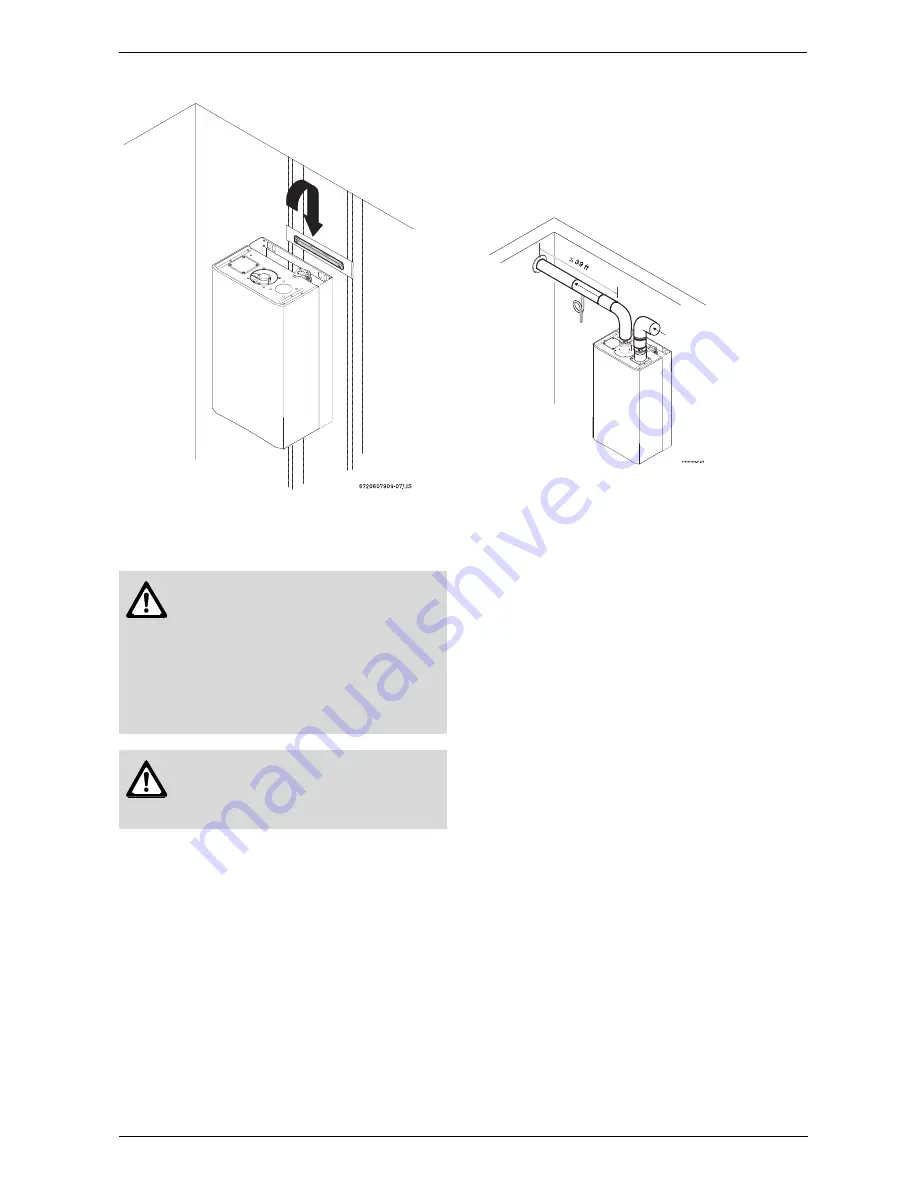
6 720 607 909
Installation instructions
11
Fig. 10 Mounting the heater
3.5
Combustion air requirements
Twin pipe
The GWH-345/450-ESR is designed as a sealed
combustion appliance. It is recommended that the
combustion air be provided by a dedicated 3” pipe to
the outside. If terminating combustion air piping
horizontally, pitch vent down 1/4" per foot towards
termination to prevent rain from entering the appliance.
The combustion air pipe may be constructed of
aluminum flex, PVC or any other rigid or semi rigid
sealed pipe. The combustion air inlet must be located in
such a manner as to provide a minimum 3 foot
clearance from the exhaust vent terminator.
The maximum length of the combustion air inlet is 39
feet with one elbow. Subtract 6 feet for each additional
elbow. Maximum number of elbows permitted is 4.
Single pipe
Although it is permissible to draw combustion air from
inside the structure, it is not the manufacturer’s recom-
mended installation method. Always install a 3 inch
elbow on the combustion air inlet to prevent foreign
objects from falling into the unit (see Fig. 11).
Fig. 11
If a single pipe installation is performed. Use the follow-
ing guidelines when providing adequate combustion air
for the recirculating water heater as well as any other
appliances that may consume air in the space. Always
follow local codes if more stringent.
•
Appliances located in unconfined spaces:
–
a)
An unconfined space is one whose volume is
greater than 50 cubic feet (1.42 cubic meter) per
1000 Btu per hour (292.81 watts) of the
combined rating of all appliances installed in the
space. That would be 6200 cubic feet (175.6
cubic meter) of air required for the GWH-345/
450-ESR alone.
–
b)
In unconfined spaces in buildings of
conventional frame, masonry, or metal
construction, infiltration air is normally adequate to
provide air for combustion.
–
c)
Installations in structures that have been tightly
constructed (air infiltration rate of 0.40 ACH or
less) must provide combustion air per the National
Fuel Gas Code. Consult an HVAC specialist if
your air infiltration rate is questionable. For these
types of installations, the twin pipe system must be
used.
Warning:
In areas where freezing
temperatures are common the twin pipe
system is recommended. In a single
pipe installation, a negative air condition
may result in cold air being drawn
across the heat exchanger coil causing
it to freeze and burst.
This failure is
not covered under the
manufacturer’s warranty
.
Warning:
When installed in an
environment where corrosive chemicals
or dirty air are present the twin pipe
system is required.












































